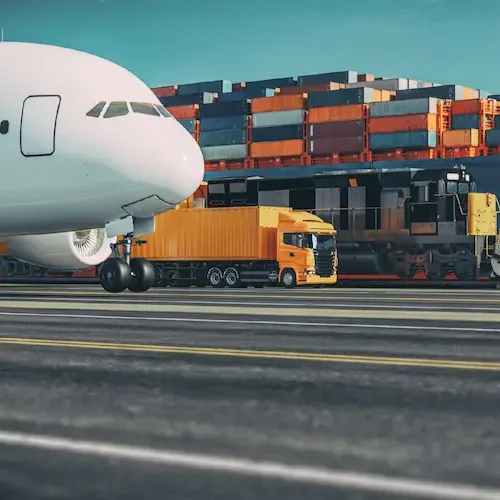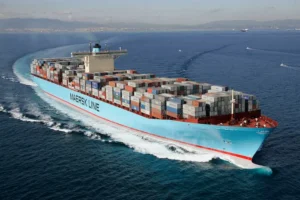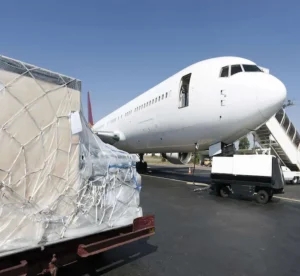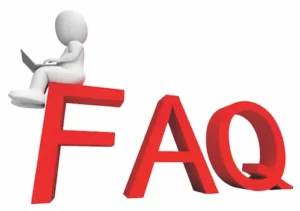How to save shipping costs for global trade
Here are some shipping methods for global trade below.
5 popular shipping methods for global trade
Ocean Freight (FCL/LCL)
Most cost-effective for bulk shipments with Full Container Load offering exclusive container use. Less than Container Load sharing space for smaller loads.
Air Freight
Fastest international option (1–5 days) for urgent, high-value, or perishable goods under ~500 kg.
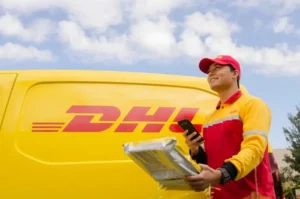
Express Courier (e.g., DHL/UPS/FEDEX)
Door-to-door delivery for documents/small parcels (<70kg) with tracking and customs clearance included.
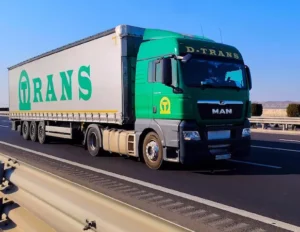
Trucking (FTL/LTL)
FTL full than truckload for dedicated shipments; LTL Less-Than-Truckload shares space for partial loads domestically.
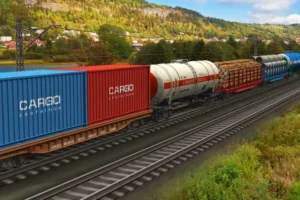
Rail Freight
Eco-friendly alternative for heavy cargo over land corridors, 30–50% faster than sea, 50% cheaper than air.
DDP (Delivered Duty Paid)
Seller handles all costs/risks (shipping, duties, taxes) until goods reach buyer’s warehouse.
DDU (Delivered Duty Unpaid)
Buyer pays import duties/taxes upon arrival, shifting compliance burden to them.
4 key reasons why need to save shipping costs of custom paper boxes from China to the U.S.
1. Long-Distance Ocean Freight Dominance
Most paper packaging ships via ocean freight, where fuel surcharges and peak season fees inflate base rates.
2. Dimensional Weight & Low Cargo Density
Paper boxes often have high volume-to-weight ratios—air/express carriers charge based on dimensional weight.
3. Peak Season Demand & Capacity Crunches
E-commerce spikes cause equipment shortages and priority fees.
4. Tariffs and Compliance Complexity
Paper packaging faces 35-55% U.S. tariffs.
3 Steps to Save Shipping costs
Step 1: Assess Product & Packaging Efficiency
Use foldable boxes, card board boxes, custom mailer boxes instead of two-piece custom rigid boxes.
Step 2: Optimize Size, Weight & Shipment Volume
The shipping fees is less if with a smaller box. It charges based on dimensional and weight.
Order early to use economy ocean freight instead of air. Rush orders force expensive express.
Step 3: Select Tax-Inclusive Methods
Door to door service include all taxes and freight. Air freight is cheaper per unit than standard express.
FAQs about global shipping
- Q1: What if shipping costs increase after I place my custom boxes order?
- A: You can choose to pay the shipping costs in together with the orders. Or delay shipping until rates stabilize (if possible), or discuss alternative shipping methods.
- Q2: Will I be charged extra if I need to change the delivery address after my order ships?
- A: Yes, address changes after shipment dispatch typically incur rerouting fees charged by the carrier. Please double-check addresses before confirming shipment.
- Q3: How are shipping damages or losses handled and claimed?
- A: Report damage/loss immediately upon delivery (note on POD & email us photos/report within 24 hrs). We file claims with the carrier on your behalf. Reimbursement depends on carrier investigation and your chosen insurance level (basic carrier liability vs. additional cargo insurance).
- Q4: My shipment incurred unexpected oversize/overweight fees. Why, and who pays?
- A: Fees occur if pallet dimensions/weight exceed standard carrier limits. We provide dimensional/weight estimates upfront.
- Q5: What happens if no one can sign the my packaging parcels when I’m on vacation?
- A: Contact the carrier directly using your tracking number. Request a specific delivery date after your return, Ask your neighbor to sign. Failure to receive may result in return fees or storage demurrage charges.
- Q6: What’s the fastest shipping option if I need my custom gift boxes urgently?
- A: For critical deadlines, provide your absolute deadline upfront. We’ll outline the fastest viable options and costs, balancing speed and budget.
- Q7: Should I use my own shipping account or use your account? Which is cheaper?
- A: We recommend comparing our quoted freight cost against your carrier’s quote for the same service level to decide.
- Q8: What’s the most hassle-free shipping method overall?
- A: FCL (Full Container Load) door-to-door with us handling all logistics is often the most straightforward for larger orders. For smaller orders, premium courier services (DHL/FedEx) offer door-to-door tracking but at a higher cost.
- Q9: Can you ship to an Amazon FBA warehouse directly?
- A: Yes. Provide your FBA shipment plan details, and we’ll ensure compliance.
- Q10: Can you store my finished goods for a short period before shipping?
- A: We offer limited short-term storage free of charge. Longer-term storage may incur nominal warehousing fees – please inquire.
- Q11: How do I track my shipment once it’s dispatched?
- A: We provide you with the tracking number and carrier name immediately upon shipment. You can track it directly on the carrier’s website using that number. We also monitor key milestones.
- Q12: How can I manage expensive import tariffs?
- A: DDP. We quote & pay all duties/taxes upfront for predictable landed costs.
- Q13: Should I choose a 20ft or 40ft container for my shipment?
- A: 40ft container (FCL) is significantly more cost-efficient per pallet. Though base ocean freight is ~1.8x a 20ft, lowering your unit shipping cost. 20ft container is suitable for about 28m³ goods.
- Q14: Do rigid book-style boxes or foldable boxes save shipping costs?
- A: Foldable boxes save much freight costs because of less volume but require manual assembly. Custom boxes cost less to produce and arrive ready-to-use but cost much more on shipping. Choose based on assembly cost tolerance vs. freight budget.
- Q15: When should I use custom corrugated cartons vs. mailer boxes?
- A: Use custom corrugated cartons for heavy/fragile items needing crush protection. Choose mailer boxes for light and non-fragile items. It saves express costs by 25-50% and saving warehouse space.
- Q16: What are transit time guarantees, and what happens if missed?
- A: Some express/premium services offer money-back guarantees if delivery exceeds a set date. We provide guaranteed transit quotes upon request.
- Q17: What is the cheapest way to ship low-value samples internationally?
- A: Use DHL Envelope and FedEx Envelope for small samples. Small samples as zero-value/low-value gifts to minimize customs delays/tariffs. Ensure full HS code/description compliance.
- Q18: Can I consolidate multiple suppliers’ goods into one shipment?
- A: Yes! Our origin collect goods from different factories to one warehouse. We palletize/containerize everything. They save shipping costs 20-45% vs. separate shipments and simplifying customs clearance.
- Q19: How early should I book ocean freight space for peak season (Q4)?
- A: Book containers 6-8 weeks pre-shipment during peak (Sep-Nov). We pre-block space with carriers. Delayed bookings risk space shortages, 30-50% premium rates, or rollovers to later vessels.
- Q20: How do I avoid “Additional Handling” surcharges with carriers?
- A: Ensure each package/pallet: weighs <150 lbs, has <48″ height/length, has intact lifting points, and is properly labeled. Avoid soft/irregular packaging triggering manual handling fees.
- Q21: Can I customize freight payment terms (prepaid vs. collect)?
- A: Yes. Both are acceptable. You pay us upfront or your consignee pays destination charges . Choose based on cash flow control/credit terms.

ALLEN LEE
Hi, I’m Allen Lee, the owner of Allenboxes.com, I’ve been in the packaging industry for over 20 years and running a factory in China that produce for 10+ years, and the purpose of this article is to share with you the knowledge related to packaging from a Chinese supplier’s perspective.
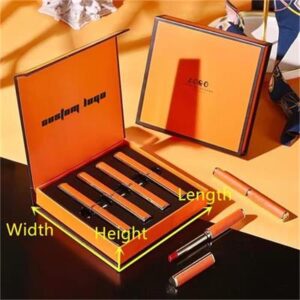
30 Common Sizes of Custom Boxes
4-step workflow to confirm Custom Box Sizes
Phase 1: Product & Dimension Fundamentals.
Phase 2: Box Type & Structural Design.
Phase 3: Budget-Driven Size Adjustments.
Phase 4: Prototyping & Refinement.
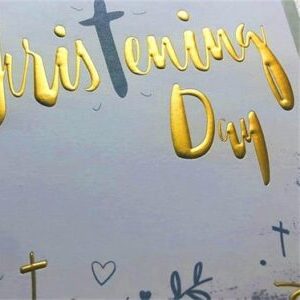
Top 8 Box Finishings
1. Foil Stamping2. Embossing/Debossing
3. Emboss + Foil (Combo Stamping)4. Spot UV
5. Glitter/Glitter Dust6. Flocking
7. Spot Embossing8. Die-Cut /Window Patching
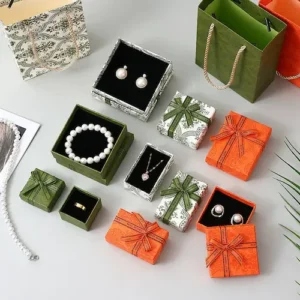
12 Common Box Inserts Introduction
1.Sponge (with velvet or paper)2.EVA Foam 3.Pearl cotton (EPE)
4.Paper Cardboard 5.Corrugated Paper 6.Plastic Blister
7.Tissue Paper 8.Raffia Filler9.Bubble Beads
10.Satin Fabric,11.Small Pouches 12.Mini Pillows
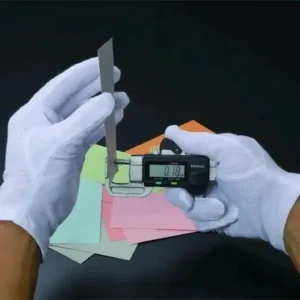
5 tips about Materials of Paper Boxes
1.Measure thickness of raw material
2.Cut a 10x10cm sheet
3.Measure paper weight
4.Measure paper thickness
5.Check standard weight-thickness tables
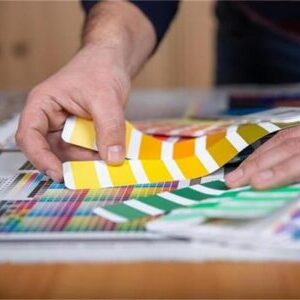
How to control color discrepancy of paper boxes
1.Same materials /ink batch
2.Same printing machines & crew
3.Same finishing (lamination/coating)
4.Identical inspection tools + standards
5. Smart color choices (e.g., black + embossed logo)

6 steps to customize paper boxes
1. Design Box style, Colors, Logos.
2. Meet the budget.
3. Revisions & Prototyping
4. Final Approval & Refinement
5. Small-Batch Testing
6. Mass Production

